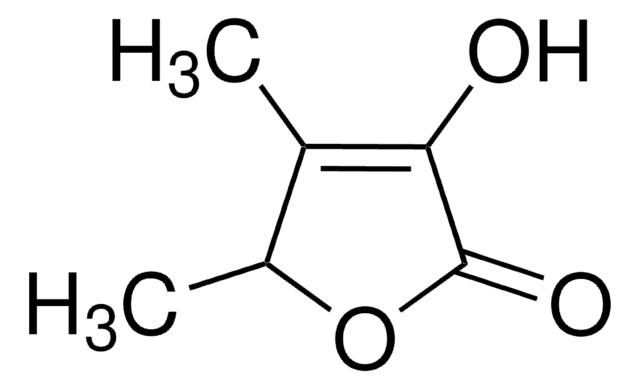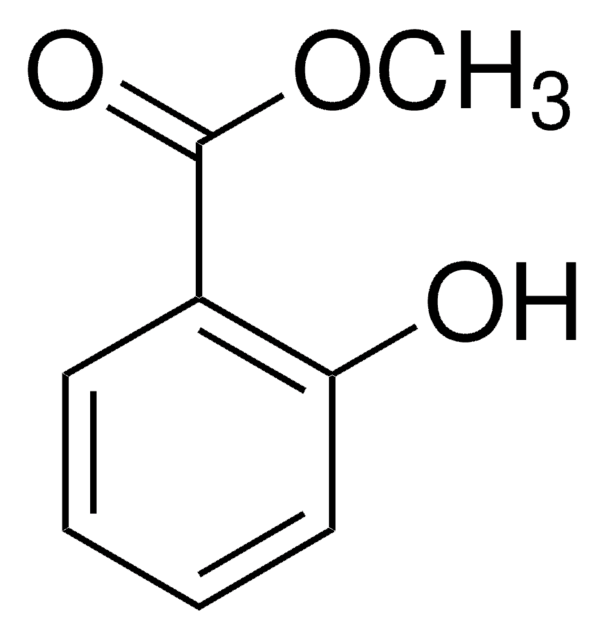Key Documents
W315109
2-Ethyl-1-hexanol
≥99%, FG
Synonim(y):
Isooctyl alcohol
About This Item
Polecane produkty
pochodzenie biologiczne
synthetic
Poziom jakości
klasa czystości
FG
Fragrance grade
Halal
Kosher
agency
follows IFRA guidelines
meets purity specifications of JECFA
zgodność regionalna
EU Regulation 1223/2009
EU Regulation 1334/2008 & 178/2002
gęstość pary
4.49 (vs air)
ciśnienie pary
0.2 mmHg ( 20 °C)
Próba
≥99%
temp. samozapłonu
550 °F
granice wybuchowości
0.88 %, 104 °F
9.7 %, 113 °F
współczynnik refrakcji
n20/D 1.431 (lit.)
tw
183-186 °C (lit.)
mp
−76 °C (lit.)
gęstość
0.833 g/mL at 25 °C (lit.)
Zastosowanie
flavors and fragrances
Dokumentacja
see Safety & Documentation for available documents
alergen pokarmowy
no known allergens
alergen zapachowy
no known allergens
Organoleptyczne
fresh; oily; citrus; floral; sweet
ciąg SMILES
CCCCC(CC)CO
InChI
1S/C8H18O/c1-3-5-6-8(4-2)7-9/h8-9H,3-7H2,1-2H3
Klucz InChI
YIWUKEYIRIRTPP-UHFFFAOYSA-N
Szukasz podobnych produktów? Odwiedź Przewodnik dotyczący porównywania produktów
Opis ogólny
Zastosowanie
- Thyroid Hormone Transporters in a Human Placental Cell Model.: This study investigates the role of 2-Amino-2-norbornanecarboxylic acid in the transport of thyroid hormones in placental cells, offering insights that could improve understanding of fetal development and maternal health (Chen et al., 2022).
Hasło ostrzegawcze
Warning
Zwroty wskazujące rodzaj zagrożenia
Zwroty wskazujące środki ostrożności
Klasyfikacja zagrożeń
Acute Tox. 4 Inhalation - Eye Irrit. 2 - Skin Irrit. 2 - STOT SE 3
Organy docelowe
Respiratory system
Kod klasy składowania
10 - Combustible liquids
Klasa zagrożenia wodnego (WGK)
WGK 1
Temperatura zapłonu (°F)
167.0 °F - closed cup
Temperatura zapłonu (°C)
75 °C - closed cup
Środki ochrony indywidualnej
Eyeshields, Faceshields, Gloves, type ABEK (EN14387) respirator filter
Wybierz jedną z najnowszych wersji:
Masz już ten produkt?
Dokumenty związane z niedawno zakupionymi produktami zostały zamieszczone w Bibliotece dokumentów.
Klienci oglądali również te produkty
Nasz zespół naukowców ma doświadczenie we wszystkich obszarach badań, w tym w naukach przyrodniczych, materiałoznawstwie, syntezie chemicznej, chromatografii, analityce i wielu innych dziedzinach.
Skontaktuj się z zespołem ds. pomocy technicznej
















